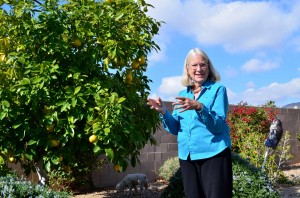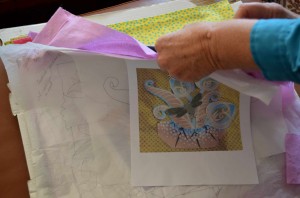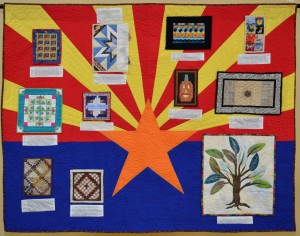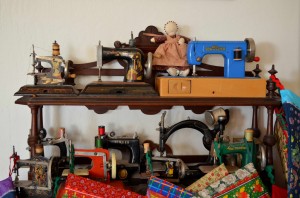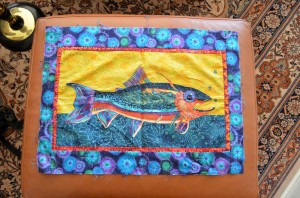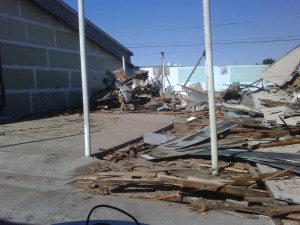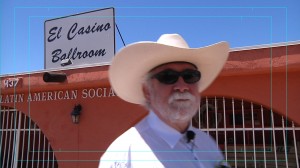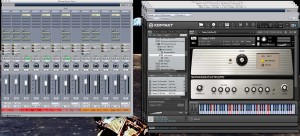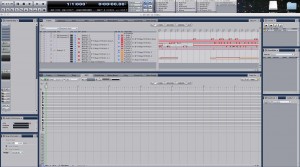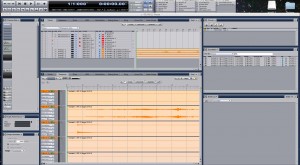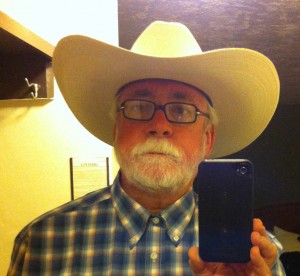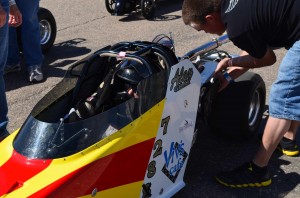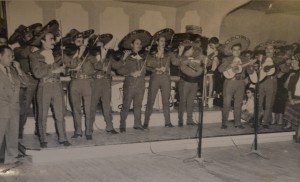
Yvonne Siqueiros, roughly age 8, seen through the legs of one of Pedro Infante's mariachis as she waits for her favorite star of the Mexican cinema to arrive.
First up, let me thank all of you who have donated to this project. I can’t tell you how much it means to me to know that you are helping this film move forward. There’s still a huge way to go in this fundraiser and I need al the help I can get, so please forward the link below to friends:
http://www.kickstarter.com/projects/1834268733/tucsons-heart-and-soul-el-casino-ballroom
Second let me fill you in on the whirlwind of activity surrounding the project that has transpired in the past few days and is coming up in the days ahead.
The Cine Plaza at the Fox series held one of its Mexican movie afternoons this past Sunday at the Fox, and I was invited to show a five-minute preview to the crowd. Publicity for it did the trick in more ways than not. Not only did we end up with a considerable crowd but the press also made several key players reach out to me to be included. They included Yvonne Siqueiros, daughter of the man who designed and built El Casino Ballroom, Ramon Siqueiros, as well as her nephew, Martin Dupont. I heard from them Thursday afternoon and had a camera in front of them Saturday noon.
They had great information about the early days of El Casino Ballroom when it was a family operation run by the three original partners – Siqueiros (who also build El Casino’s massive dance floor), accountant Benjamin Jacobs, and manager/frontman Adolph Loustaunau. The trio parleyed its individual strengths to create THE place to be in 1947, after a fire at the Blue Moon robbed Tucson of its previous largest dance floor.
According to Yvonne and Martin, Ramon Siqueiros was motivated in large part to produce a place for his then-12-year-old daughter Evelyn (later Evelyn DuPont) to gather with female friends in the popular Club Mavis, as well as soldiers return from and heading to war to have a place to dance. Yvonne produced a photo of herself on stage at El Casino Ballroom, tucked between the legs of one of Pedro Infante’s mariachis as she waited for her favorite screen idol to perform there.
Martin DuPont offered he tidbit that El Casino’s fabled 1,200-person dance floor may actually have had a prior life as a gym floor, possibly at the University of Arizona. That will take a bit to track down.
Later Saturday I interviewed current manager Fred Martinez, son of former El Casino Ballroom manager Butch Martinez, and gathered many stories, some of which he lived, others passed down to him. One told of Barry Goldwater’s aids coming to ECB to check the place out for a political rally. Both parties, then and now, used the hall to garner the Latino vote. After inspecting the place, including the bathrooms, they headed to the office of Butch Martinez and voiced concerns about the quality of the bathrooms, since Mrs. Goldwater might need to use the facilities while they were there. Butch assured them, “Mrs. Martinez uses the lady’s room all the time and it works just fine.”
And that was that.
Sunday’s preview at the Fox went well and provided us with names and phone numbers of others with stories and photos to share.
With any luck, members of Los Lobos will be sitting down Thursday to talk about their many times at ECB – a club they have come to love. Their first El Casino Ballroom gig was playing for a baptism. They also played a wedding at El Casino Ballroom, as well as numerous concerts, including a fabled two-day stint at the club as part of KXCI’s House Rockin’ concert series that people still talk about.
I’ll be putting together another five minute teaser for the Tucson Pima Arts Council’s Lumie Awards Friday night, and shooting the performance of mambo kings Sergio Mendoza y la Orkestra at that event. I’ll also be shooting long time ECB decorator Gus Ramirez as he readies the hall for that awards gathering. And then over the weekend I’ll be shooting a fundraiser for Ballet Folklórico La Paloma as it raises funds for its July trip to England to perform at the London summer olympics.
El Casino Ballroom keeps rolling, and so do I. Again, thank you for your trust and commitment to making this historic project come to fruition.
Best,
Daniel Buckley, producer.


